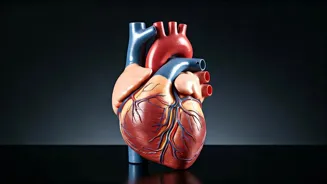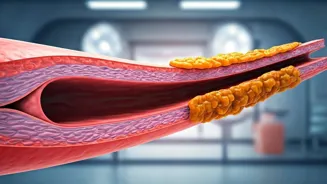Blood Pressure Basics
High blood pressure, frequently referred to as the 'silent killer,' demands consistent attention. Although medication serves a vital purpose, integrating
manageable lifestyle modifications often provides significant benefits. Among the most potent resources in this scenario is exercise, which, surprisingly, doesn't always necessitate long walks. Several enjoyable forms of movement can contribute to lowering blood pressure naturally, enhancing mood and increasing energy. These alternative exercises provide a gentle yet effective way to support better blood pressure levels. The key is finding activities you enjoy and can maintain.
Exercise: The Powerhouse
Exercise is a highly effective method for managing high blood pressure. It's about more than just walking; it's about finding varied and engaging movements. Regularly incorporating exercise into your life can yield remarkable results. When you engage in physical activities, your heart strengthens, and blood vessels become more flexible. This process reduces the workload on the heart, leading to lower blood pressure. The exercises discussed provide gentle, yet powerful, tools for achieving healthier blood pressure. Embrace the idea that fitness can also be enjoyable.
Swimming for Health
Swimming is a fantastic exercise for several reasons. It's a full-body workout that is low-impact, making it suitable for people of all ages and fitness levels. The buoyancy of the water reduces stress on your joints. Swimming helps strengthen your cardiovascular system, which is directly linked to blood pressure. When swimming, the body works to circulate blood more efficiently. Regularly scheduled swimming sessions are not just beneficial for physical health; they can provide mental relaxation as well, helping to reduce stress, which is a key factor in blood pressure management.
Cycling Your Way
Cycling is another excellent exercise option for controlling blood pressure. Whether you prefer riding outdoors or using a stationary bike, cycling provides a great cardiovascular workout. Cycling helps improve blood vessel function, promoting better blood flow. Additionally, it is relatively low impact. Cycling at a moderate pace is enough to lower blood pressure and improve overall health. Incorporating cycling into your routine, even for short durations several times a week, can significantly contribute to lowering blood pressure while being an enjoyable and easily accessible activity.
Dancing for Well-being
Dancing is a fun and engaging way to exercise. Whether you're into ballroom, salsa, or any other style, dancing provides a cardiovascular workout that boosts heart health and lowers blood pressure. Dancing is a great way to release stress and improve mood. When you dance, you move your entire body, increasing blood circulation. This activity can improve insulin sensitivity and contribute to weight management, both of which benefit blood pressure. Dancing is a versatile exercise, easily adapted to personal preferences and fitness levels, making it an accessible and enjoyable part of a health routine.
Yoga for Balance
Yoga combines physical postures, breathing techniques, and meditation to offer multiple health benefits, including blood pressure control. Yoga poses can reduce stress and improve the body's relaxation response. Certain yoga practices focus on deep breathing, which can decrease blood pressure by promoting calm and reducing tension. Practicing yoga regularly can also lead to improved flexibility and muscle strength. As a low-impact exercise, it's suitable for people of all ages and fitness levels, making it an accessible method for managing high blood pressure.
Strength Training Benefits
Strength training, though often associated with building muscle, is highly beneficial for lowering blood pressure. It helps improve overall fitness and metabolic health. Building muscle increases your metabolic rate, which in turn helps manage weight and regulate blood pressure. Strength training doesn’t necessarily require heavy weights; bodyweight exercises are also effective. It improves insulin sensitivity and supports healthy blood sugar levels, all of which impact blood pressure. Implementing strength training exercises, even a couple of times a week, can improve both your blood pressure and overall well-being.
Tai Chi for Calmness
Tai Chi is a gentle form of exercise that combines slow movements, deep breathing, and meditation. It is renowned for its ability to reduce stress and promote relaxation. Studies have shown that Tai Chi can significantly lower blood pressure by enhancing cardiovascular health and reducing the sympathetic nervous system activity. Regular Tai Chi practice improves balance, coordination, and flexibility. It is a low-impact exercise suitable for all ages and fitness levels. By integrating Tai Chi into your routine, you gain a powerful tool to reduce stress and improve blood pressure naturally.





